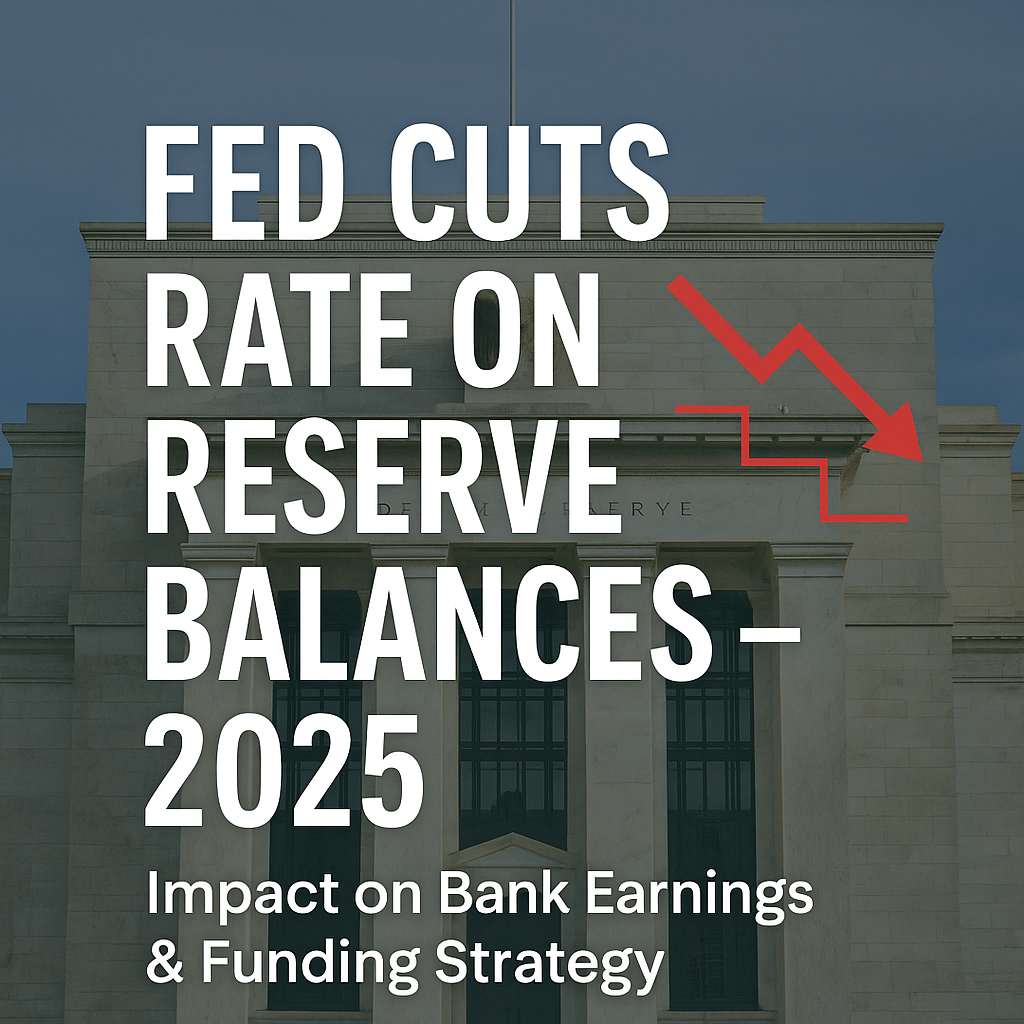Fed Cuts Rate on Reserve Balances: What It Means for Banks
On September 18, 2025, the Federal Reserve cut the interest rate it pays on reserve balances (IORB) to 4.15%, coinciding with its broader monetary policy adjustment. Federal Reserve
This change signals a shift in how banks will earn on their excess reserves and has implications for funding strategies, interest income modeling, and balance sheet optimization.
Why This Shift Matters
- Direct impact on net interest income: For banks holding large reserve balances, the cut reduces a floor on risk-free earnings, likely putting pressure on margins.
- Reconsideration of excess liquidity strategy: Banks may evaluate deploying more excess funds into earning assets or adjust short-term funding models.
- Funding cost dynamics: If the spread between deposit rates and IORB narrows, deposit competition and pricing decisions become more delicate.
- Liquidity and balance sheet implications: Banks will need to balance reserve requirements, liquidity buffer sizes, and yield-seeking tradeoffs in a tighter environment.
Key Implications & Strategic Adjustments
| Strategic Area | Considerations |
|---|---|
| Earnings modeling | Reforecast net interest income under the new IORB rate scenario and stress test across funding assumptions. |
| Reserve deployment | Review potential reallocation of reserves to higher-yielding assets (e.g., short-term securities, commercial lending) subject to risk appetite. |
| Deposit and funding pricing | Adjust deposit pricing strategies in light of reduced return floor; carefully manage margin pressure. |
| Liquidity buffer sizing | Reevaluate buffer levels—excess reserves may become more costly to hold, driving tighter liquidity management. |
| Capital & stress testing | Incorporate the rate change into capital plans, stress tests, and scenario analysis—especially under deposit outflow stress. |
| Communication with investors | Update investor and board materials to explain the impact of the IORB rate change and your mitigation strategies. |
Broader Context & Connections
- This move came alongside the Fed’s decision to lower the target range for the federal funds rate. Federal Reserve
- It aligns with broader regulatory and supervisory shifts toward efficiency and recalibration of bank incentives. As regulatory priorities evolve, the reward for idle reserves is being reduced.
- In Gibson Dunn’s September 2025 review, regulators are noted to be embedding more transparency and refocusing examination priorities.
How Saturn Partners Can Help
We support banks navigating this transition with:
- Earnings and margin impact modeling
- Reserve deployment optimization and ALM strategies
- Funding and deposit pricing advisory
- Stress test adaptation and capital planning
- Board & investor presentation preparation
Contact us today so we can help model your IORB sensitivity and set a resilient funding strategy for 2026.

